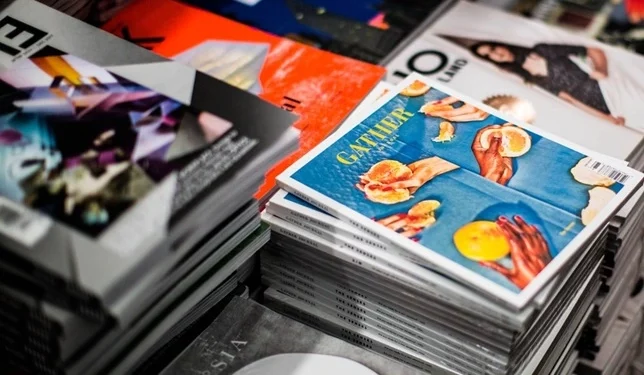Demystifying Poster Printing
Poster printing is an old and vital art that creates large-scale prints, typically on paper or vinyl. The method is primarily used in advertising, marketing, and informational dissemination. The versatility of poster printing allows for a broad range of sizes, from compact flyers to immense billboards.
Choosing the Right Printing Method: Offset or Digital?
When venturing into cheap bulk poster printing, it’s crucial to understand the two fundamental types of printing methods: offset and digital.
Offset Printing
Offset printing; the traditional method utilizes a printing press to transfer ink from a plate to paper. Although more expensive than digital, this method offers excellent-quality prints, making it the preferred choice when you need high-quality, large-scale images.
Digital Printing
Digital printing is a recent development that relies on computer technology to generate an image printed directly onto the material. Though less suitable for large-scale printing than offset, digital printing is quicker and more cost-effective, making it ideal for small-scale and urgent projects.
Exploring Poster Printing Techniques
Several printing techniques are commonly used, each with unique qualities and ideal use cases.
Inkjet Printing
Inkjet printing is a form of digital printing perfect for producing posters on small- to medium-sized paper. It offers high-quality, detailed prints with vibrant colors, although the print speed can be slower than other methods.
Screen Printing
Screen printing is a versatile method that accommodates many materials, including paper, vinyl, and fabric. This method involves creating a stencil (or screen) and then applying layers of ink on the printing surface.
Vital Elements of Poster Printing
The following factors largely determine the quality of your posters:
Image Resolution
The clarity of your printed image heavily depends on the image resolution. A minimum resolution of 150 DPI is required, although 300 DPI is recommended for optimal results.
Paper Type
The type of paper used significantly influences the look and feel of the print. Options like matte, glossy, and satin contribute differently to the poster’s aesthetic.
Color and Font
The color scheme plays a crucial role in capturing attention and setting the mood or tone of your message. Meanwhile, the font should be legible and aligned with the overall style of the poster design.
Design
The overall design must be visually captivating and communicate your message. It’s the essence of an effective poster.
Poster Printing Tips: Ensuring Quality and Efficiency
Using High-Quality Images
Ensure you use high-resolution images, at least 150 DPI, for quality prints.
Creating a Vector File
If your poster design includes vector graphics, create a vector file. This method guarantees sharp and clear images when printed.
Proofreading Text
Meticulously proofread your text to avoid any spelling or grammatical errors that could compromise the professionalism of your poster.
Ordering a Proof
For bulk orders, consider ordering proof first. It’s a worthwhile step that allows you to verify the print quality before proceeding with the full order.
In conclusion, poster printing is an art that requires careful consideration of several elements, from the printing technique and image resolution to the paper type and design. By embracing the tips discussed in this article, you’re on your way to creating posters that are not just visually appealing but also effective in conveying your message.
Remember, the environment will also thank you for choosing eco-friendly printing options, a gesture that contributes to the sustainability of our planet.
FAQs
What is poster printing?
Poster printing refers to creating large-scale prints, generally on materials like paper or vinyl. These prints are typically used for advertising, marketing, or conveying information and can range in size from small flyers to large billboards.
What are the main types of poster printing?
The two primary types of poster printing are offset printing and digital printing. Offset printing is a traditional method that uses a printing press. In contrast, digital printing involves using a computer to create an image printed directly onto the material.
What factors should I consider when choosing a poster printing method?
When selecting a poster printing method, consider your budget, the size of your poster, and the number of signs you need. Offset printing generally produces higher-quality prints and is better suited for large-scale printing but is typically more expensive. Digital printing, on the other hand, is less costly and faster, making it ideal for smaller-scale projects.
What are some common techniques used in poster printing?
Common techniques used in poster printing include inkjet printing and screen printing. Inkjet printing is a digital printing ideal for small to medium-sized paper. Screen printing allows printing on various materials, including paper, vinyl, and fabric.
Why is image resolution important in poster printing?
Image resolution is crucial in poster printing because it affects the sharpness and clarity of the print. A higher resolution will result in a sharper, more detailed image. The minimum recommended solution for a poster is 150 DPI, but a resolution of 300 DPI is suggested for the best results.
What are some considerations for designing a poster?
When designing a poster, it’s important to consider the paper type, color, font, and overall design. These factors will greatly affect the aesthetic and effectiveness of your poster. The design should be visually appealing and communicate your message.
What are some tips for ensuring a high-quality poster print?
Some tips for ensuring a high-quality poster print include using high-resolution images, creating a vector file for vector graphics, proofreading the text carefully for errors, and ordering proof for large orders to verify the print quality.
Why should I consider eco-friendly poster printing options?
Choosing eco-friendly poster printing options is better for the environment and aligns with the increasing consumer demand for sustainable practices. By opting for eco-friendly printing, you contribute to the health and sustainability of our planet.
Also, Read The Proactive Force Behind São Paulo’s Innovation: The Tale of 45.569.454 Inova Simples (I.S.).


















